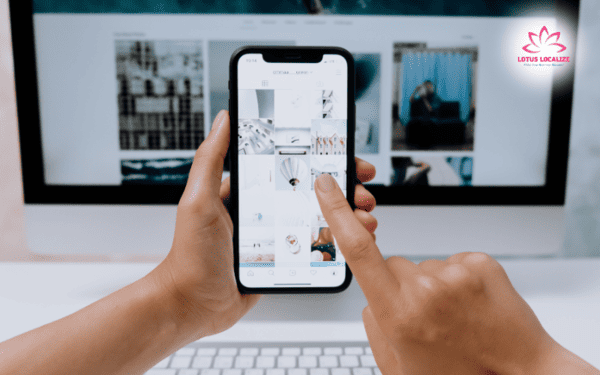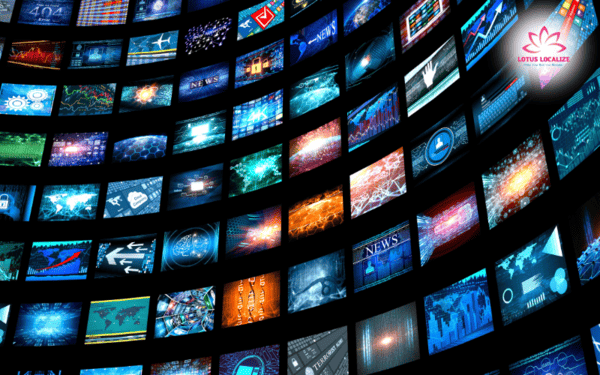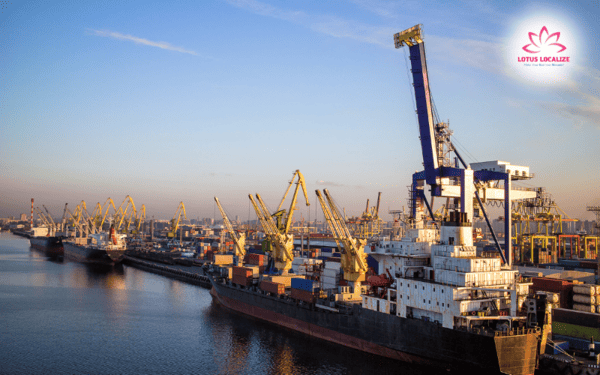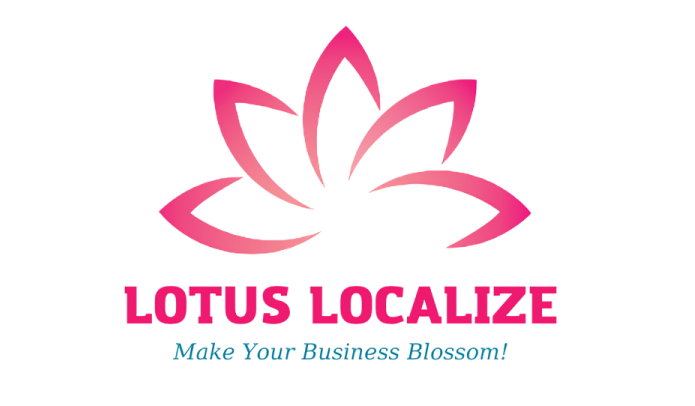
Media localization helps you deliver content that truly resonates worldwide
In today’s fast-paced digital world, media content is no longer bound by borders. Whether it’s a YouTube video, a brand campaign, or an interactive e-learning module, audiences expect seamless experiences in their own language and cultural context. That’s where media localization steps in.
More than just translating words, media localization involves adapting multimedia content—including visuals, audio, and cultural nuances—to create a native-like experience for international viewers. It’s the bridge between global brands and local audiences, helping businesses communicate meaningfully across regions.
What is media localization?
Media localization is the process of adapting video, audio, animations, and on-screen text for a specific target market. Unlike standard translation, which focuses purely on converting language, media localization takes a more holistic approach—considering cultural norms, visual relevance, tone of voice, and user expectations.

For example, a simple training video in English might require not just subtitles in Japanese but also dubbing by a native voice actor, changing visual symbols (e.g., currency or gestures), and reworking the script to align with local customs. The aim is to make the localized version feel as if it were originally created for that market.
Some of the most common types of localized media include:
- Marketing and promotional videos
- E-learning content
- Corporate training materials
- Entertainment content (TV, film, games)
- Interactive product demos and apps
In short, media localization ensures that global content doesn’t just reach new audiences—it resonates with them.
Read more: Why accurate medical education translation is critical in global healthcare
Why media localization matters more than ever
The growing dominance of digital video and interactive content means that audiences are consuming media across countless platforms and languages. And they expect it to speak to them—literally and culturally.
Here’s why businesses, educators, and creators are prioritizing media localization:
Audience preference for native-language content
Studies show that over 65% of users prefer content in their own language—even if they understand English. This applies not only to entertainment but also to training, customer onboarding, and brand communication.
Localized content helps reduce friction and build trust, making viewers more likely to engage, convert, or retain information.
Enhancing global brand perception
Well-localized content signals professionalism, attention to detail, and respect for the audience’s culture. It enhances brand credibility in international markets and positions your company as truly global.

Boosting engagement and accessibility
From dubbing and subtitling to visual cues and tone adjustments, localization enhances user experience across demographics—including non-native speakers, children, and people with hearing impairments.
Supporting market expansion
Launching in new regions without adapting your multimedia assets can backfire. Localization ensures your global marketing strategy doesn’t lose relevance or create confusion across different cultural landscapes.
Core elements of media localization
An effective localization strategy for media typically involves multiple elements working in harmony. Here are the essential building blocks:
- Script translation and adaptation: The source script isn’t just translated—it’s adapted for tone, idioms, and cultural relevance. For example, a pun or joke in English may need to be rephrased or replaced entirely to make sense in Korean or Arabic.
- Subtitles and captions: Subtitling remains one of the most cost-effective forms of media localization. It requires synchronizing the translated text with timecodes, ensuring it matches the audio while staying within character limits and reading speed.

- Voice-over and dubbing: When subtitling isn’t enough, especially for marketing or entertainment content, audio localization is used. Dubbing involves replacing the original voice with a local one, often matching lip movements and tone. Voice-over, on the other hand, layers translated narration over the original audio.
- Visual and on-screen content adaptation: This includes translating text that appears on screen (titles, menus, labels), swapping out culturally specific images or references, and editing graphics to suit local norms (e.g., color symbolism, attire, body language).
- Cultural sensitivity and tone: What’s appropriate in one culture may be offensive in another. Cultural adaptation ensures your media avoids pitfalls while embracing local values, humor, and emotional context.
What types of content benefit the most from media localization?
Not all content requires the same depth of localization, but the following types often see the greatest ROI from proper adaptation:
- Marketing videos: From YouTube ads to product explainers, video localization helps brands reach new markets with clear, emotionally resonant messaging. Cultural alignment is key to avoiding tone-deaf campaigns.
- E-learning and training content: Whether training employees or educating customers, localized learning modules improve knowledge retention, reduce misunderstandings, and increase satisfaction among learners worldwide.

- Entertainment and media: Multimedia translation in the entertainment industry includes subtitling, dubbing, and culturally adapted storytelling for films, series, games, and documentaries. This is especially critical for streaming platforms and gaming studios expanding globally.
- Corporate communications: Internal videos, investor presentations, and leadership messages benefit from localization to ensure alignment and clarity across global teams and stakeholders.
Read more: Game localization vs translation – What sets them apart, and why it matters
The key differences between media localization and translation
While both approaches aim to make content accessible across languages, media localization and traditional translation differ significantly in purpose, process, and output:
Scope of content:
- Traditional translation deals mainly with written materials such as documents, websites, manuals, and emails.
- Media localization focuses on multimedia formats like videos, animations, e-learning modules, games, and audio content.
Depth of adaptation:
- Translation typically maintains the structure and tone of the original text, aiming for accuracy and clarity.
- Localization goes beyond words, adapting visuals, tone, cultural references, humor, and emotional cues to suit the target audience.

Format-specific challenges:
- Translation handles continuous text and doesn’t usually deal with technical timing or formatting constraints.
- Media localization must account for timecodes (in subtitles), lip sync (in dubbing), and layout constraints (e.g., character limits on-screen).
Tools and techniques:
- Translators use CAT tools and translation memories to ensure consistency and speed.
- Localization teams rely on video editing tools, subtitle software, voice recording equipment, and localization management systems.
Team involvement:
- Translation often requires a translator and a reviewer.
- Localization involves a broader team: linguists, voice actors, sound engineers, video editors, QA testers, and cultural consultants.
End goal:
- Translation ensures the message is understood accurately in another language.
- Localization ensures the message feels natural, engaging, and culturally appropriate—just as if it were created for the target audience from the start.
In summary, translation is about clarity, while media localization is about connection. If translation helps your audience understand, localization helps them relate and respond.
Emerging trends in media localization
As technology and consumer behavior evolve, media localization is also undergoing major shifts:
AI and synthetic dubbing
Artificial intelligence is being used to create realistic AI voiceovers, cutting costs and speeding up production for high-volume video content. However, human review is still essential for tone and emotional nuance.
Real-time localization
Some platforms are experimenting with real-time video localization, allowing livestreams or webinars to be interpreted or subtitled instantly in multiple languages.

Localization for short-form content
As platforms like TikTok and Instagram Reels grow, brands are adapting short-form videos for different regions, including regional slang, music, and pacing.
AR/VR and immersive content
With the rise of immersive media, localization strategies must now include augmented reality (AR) and virtual reality (VR) content—ensuring interactivity and presence are preserved across languages and cultures.
Media localization is no longer optional—it’s essential for global success. Whether you’re a business expanding into new markets, a content creator reaching global followers, or an educator offering cross-border training, localized media helps you communicate more clearly and connect more deeply.
From script adaptation to cultural localization, every detail matters. The more naturally your message fits into the local context, the more powerful your impact.
As the world continues to globalize digitally, one thing is certain: truly great content doesn’t just translate—it transforms for every audience it touches.
If you have any questions or need assistance with document translation services for many industries: life sciences translation, education translation, technology translation, financial translation, marketing translation, manufacturing translation, government translation,… and interpretation services: escort interpreting, simultaneous interpretation, remote interpretation, and localization services: software localization, game localization, app localization,… please contact Lotus Localize immediately at +84 866 224 968 or visit the website: lotus-localize.com for advice on the best solutions!
QUALITY PROMISE
Lotus Localize offers consistent, high-quality service delivery in all customer engagements. Our in-house translators and staff adhere to well-established business processes, allowing us to communicate properly, deliver on time, and surpass client expectations.












